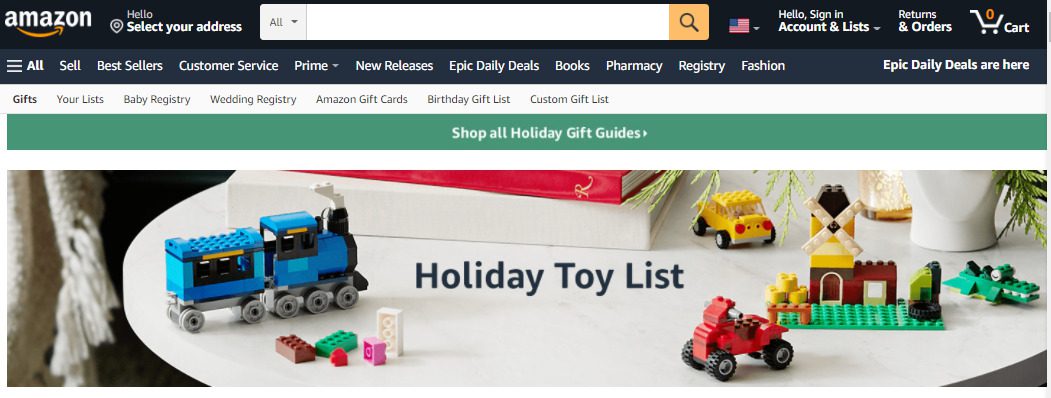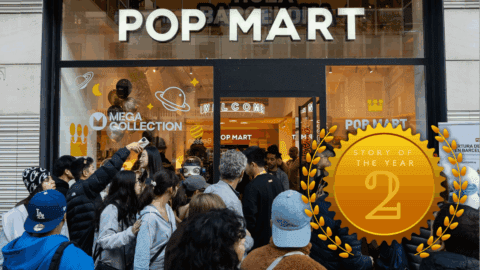Another unprecedented holiday season is upon us and there is a powerful sense of déjà vu in the air. For a brief moment earlier this year it seemed like the clouds were parting, but the Delta variant put an end to that. Retailers and consumers alike are bracing for a holiday season much like the last — masks look set to remain a top stocking-stuffer; “supply chain” has a become a daily topic in mainstream media; and parents are gearing up for tears with the top toys of the year already predicted to go out of stock.

To say everyone is worn out is probably an understatement, and by all accounts marketers in particular are feeling the pressure — a staggering 70% of marketing executives said the pandemic has left them “completely exhausted,” according to a new report from Accenture Interactive. And in the background, the impending elimination of third-party cookies, while delayed, still looms large in marketers’ minds.
“The customers they once knew are no longer the same,” the Accenture report states. “[Marketers that have thrived during the pandemic] know their old beliefs about customer preferences — and by extension, how they connect with their customers — are less relevant. [They] are committed to making a wholesale shift to adapt everything they do — insight, data, engagement, responsiveness.”
A tall order, but retail marketers are doing just that by:
- Using early holiday promotions to reconnect with consumers they may have lost due to customer service failures last holiday season;
- Starting holiday campaigns sooner than ever to get an early read on demand and offset the impact of supply chain delays; and
- Adjusting their personalization efforts to focus on creating relevant experiences instead of superficial customizations.
[Editor’s Note: To learn more about how retailers are employing digital solutions to be more responsive to consumers this holiday season and year-round, stay tuned next week for our special report: The Next Stage of Retail’s Digital Transformation: Omnichannel Experiences and More Agile Supply Chains.]
A Tale of Two Types of Retailer
The pandemic took everyone by surprise, but some retailers were able to react more quickly than others: “The big retailers that had been able to proactively invest in digital ahead of the curve had a disproportionate advantage [in the early days of the pandemic],” said Jason Goldberg, Chief Commerce Strategy Officer at Publicis in an interview with Retail TouchPoints. “Certainly Walmart, Amazon and Target did much better than the specialty or regional retailers.”
Those that didn’t have the products or services consumers were looking for last holiday season found themselves holding the (empty) bag, as consumers abandoned brand loyalty in lieu of getting what they needed wherever they could find it. Consumers switched brands at a rapid pace during the pandemic, and research from McKinsey indicates that 30% to 40% of consumers are continuing to do so when brands don’t meet their expectations.
“When someone crushes it, it means that someone else gets crushed — you don’t create buyers,” said Brendan Witcher, VP and Principal Analyst, Digital Business Strategy at Forrester Research in an interview with Retail TouchPoints. “For example, in Q2 of 2020, Target announced that they had 10 million new customers, and what I thought to myself wasn’t, ‘That’s amazing for Target,’ it was, ‘That’s 10 million people that didn’t shop with somebody else.’
“There’s a huge imbalance going on in retail, and it is a mistake to say that retail is healthy and doing well,” he added. “There is a subset of large retailers that are healthy and doing well, but there’s a big set of retailers that are struggling and, as a result, marketing will play out big this year.”
This is an especially critical holiday for retailers big and small alike. The larger players are looking to double down on their 2020 gains with campaigns that will keep new customers right where they are. These retailers’ first task? Encourage first-time customers to make a second purchase. “One of the basic tenets of retail is that when you get a new buyer to buy from you a second time within the first three months, they’re likely to remain a buyer for much longer, so [the big retailers] are looking to create habits,” explained Witcher.

Other retailers that have caught up to the giants in terms of services like curbside pickup and BOPIS, as well as inventory availability, want to lure customers back. The 2021 holiday period will be a pivotal moment for them to make the case that they are ready and able to meet shoppers’ needs now, even (or especially) if they weren’t last holiday season.
One of the best ways to do that, and a tactic retailers of all sizes already are employing, is by offering customers deals they can’t refuse. That’s a key reason that the the holiday promotions cycle has kicked off earlier than ever before, with Amazon, Walmart and Target leading the charge.
Early Birds Get the Products
There’s another advantage to earlier-than-usual holiday promotions. They can provide trend and demand insights sooner so that retailers can line up holiday inventory ahead of their competitors — something that is particularly important this year as the chaos in the global supply chain continues.
“In a world where things were normal you could place POs [purchase orders] on Nov. 15 and still have items in the door before the cutoff for holiday — that’s no longer the case,” said Witcher. “That means [retailers] need to get reads on items much earlier. The only way you do that is to get volume earlier, and the only way you get that is to get promotions out there earlier.”

Witcher does have some advice for marketers this year beyond just “go big, early.” First, with product availability under pressure, marketers should avoid item-specific promotions that might drive too much demand for single SKUs and risk adding to consumer disappointment if they are met with stockouts. Instead, category-level discounts are a better bet this year.
Retailers should also think beyond the discount in their promotions: “Offering things like free associate meetings, free shipping or free gift wrapping, that’s a way to also differentiate your brand,” said Witcher. “If you start adding services, then it’s a much smarter way to say, ‘We do something that other people don’t.’”
Forget About Personalization, Focus on Relevancy
As marketers look to create holiday promotions and content that not only brings in customers but also leads to conversions, personalization remains a sticking point. Both Witcher and Goldberg said this is because personalization is widely misunderstood among retailers.
“Personalization is not an outcome,” Goldberg pointed out. “No customer knows that they got a personalized experience, because [customers] don’t have many experiences [with you] — each customer gets one. What customers really want are good, relevant experiences.”
While personalization is required to create those relevant experiences, the kinds of superficial customizations many businesses employ today are insufficient. “I’ve never been on an earnings call where a CEO said, ‘Sales are up 5% after we started wishing customers a happy birthday,’” said Witcher.
Witcher believes marketers need to move past demographic data as their main criteria for personalization: “For years we’ve been personalizing based on age, gender, zip code, income level,” he said. “The reality is, that’s not why we buy — we are conditional. Real personalization happens when you understand the conditions of a customer’s willingness to buy from you.”
Those conditions might include:
- Last-mile options like fast delivery or BOPIS;
- Promotions or coupons;
- Convenience services like gift wrapping or easy returns;
- Shopping tools like product reviews, comparison charts or relevant product recommendations;
- Access to store associates; and, of course,
- Product availability.
“I don’t mean we need to kill segmentation,” added Witcher. “What I mean is that we need to stop looking at segmentation as the North Star of personalization, because it doesn’t get to who we really are.”
Witcher also isn’t sorry that the days of surreptitiously tracking consumers across the web are numbered. “We have to stop being so covert about trying to understand customers — cookies were the worst thing that ever happened to this industry,” he said. “When you walk into a store, associates don’t hide around corners and watch what you do. What does an associate do? They ask, ‘What can I help you with?’ And then when I say toasters, they don’t bring me to the blenders. The ideal digital experience is not so far afield of the experience we get in physical stores.”
“The future of personalization is a lot more based on real-time implicit data,” added Goldberg. “What are you doing right now that tells me about your specific need in this moment? What little breadcrumbs did you leave that I can use to make my experience more relevant to you?”
Much of this information can be gathered by creating “digital dialogues” with customers both online and in stores through self-service offerings and associates. For example, floor associates should have ready access to online reviews so they can pull them up when a question arises, said Witcher. Associates should also be able to easily log customer interactions — things like, “This customer asked about reviews,” or “This customer asked about product X but ended up buying product Y.” Collecting this type of information gives retailers the ability to create more relevant future experiences for that customer, and aggregating this data can give a sharper picture of how customers are shopping in and across channels.
Creating this kind of relevancy requires a much more flexible approach from marketers, and from divisions across the entire business: “It means moving away from committing to specific investments or campaigns far in advance, and instead, regularly revisiting plans and actions and revising them as necessary,” Accenture said in its report. “A critical foundation for this is to have an operating model backed by technology capabilities that allow for rapid and smooth shifts. It is not about rushing; it is about being ready.”
This is all part of an ongoing digital transformation in the retail industry that is enhancing capabilities and improving the customer experience. To learn more about how retailers are employing digital solutions to be more responsive to consumers, look for our special report appearing Oct. 19: The Next Stage of Retail’s Digital Transformation: Omnichannel Experiences and More Agile Supply Chains.













